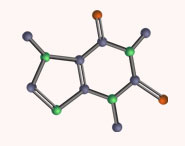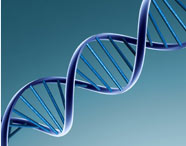


 علم الكيمياء
علم الكيمياء 
 الكيمياء التحليلية
الكيمياء التحليلية 
 الكيمياء الحياتية
الكيمياء الحياتية 
 الكيمياء العضوية
الكيمياء العضوية 
 الكيمياء الفيزيائية
الكيمياء الفيزيائية
 الكيمياء اللاعضوية
الكيمياء اللاعضوية 
 مواضيع اخرى في الكيمياء
مواضيع اخرى في الكيمياء
 الكيمياء الصناعية
الكيمياء الصناعية |
أقرأ أيضاً
التاريخ: 14-12-2016
التاريخ: 14-9-2020
التاريخ: 3-11-2019
التاريخ: 1-9-2019
|
Adjusting the pH of a solution often provides an easy way to separate compounds. Separating a mixture of benzoic acid (PhCO2H) and toluene (PhMe) is easy: dissolve the mixture in CH2Cl2, add aqueous NaOH, shake the mixture of solutions, and separate the layers. The CH2Cl2 layer contains all the toluene. The aqueous layer contains the sodium salt of benzoic acid. Addition of HCl to the aqueous layer precipitates the insoluble benzoic acid.
A more realistic separation is given in a modern practical book after a Cannizzaro reaction. You will meet this reaction in Chapters 26 and 39 but all you need to know now is that there are two products, formed in roughly equal quantities. Separation of these from starting mate rial and solvent, as well as from each other, makes this a useful reaction.
The products under the basic reaction conditions are the salt of the acid (soluble in water) and the alcohol (not soluble in water). Extraction with dichloromethane removes the alcohol and leaves the salt in the aqueous layer along with solvent methanol and residual KOH. Rotary evaporation of the CH2Cl2 layer gives crystalline alcohol and acidification of the aqueous layer precipitates the neutral acid.
In the same way, any basic compounds dissolved in an organic layer can be extracted by washing the layer with dilute aqueous acid and recovered by raising the pH, which will precipitate out the less soluble neutral compound. A general way to make amines is by ‘reductive amination.’ Ignore the details of this reaction for now (we come back to them in Chapter 11) but consider how the amine might be separated from starting material, by products, and solvent.
As the reaction mixture is weakly acidic, the amine will be protonated and will be soluble in water. The starting material and intermediate (of which very little is present anyway) are soluble in organic solvents. Extracting the aqueous layer and neutralizing with NaOH gives the amine. Whenever you do any extractions or washes in practical experiments, just stop and ask yourself: ‘What is happening here? In which layer is my compound and why?’ You will then be less likely to throw away the wrong layer (and your precious compound)!



|
|
|
|
لشعر لامع وكثيف وصحي.. وصفة تكشف "سرا آسيويا" قديما
|
|
|
|
|
|
|
كيفية الحفاظ على فرامل السيارة لضمان الأمان المثالي
|
|
|
|
|
|
|
شعبة مدارس الكفيل: مخيَّم بنات العقيدة يعزِّز القيم الدينية وينمِّي مهارات اتخاذ القرار لدى المتطوِّعات
|
|
|